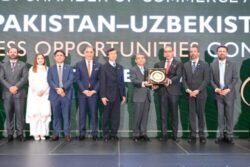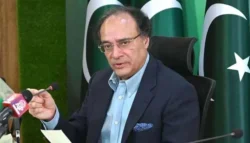Investment visas

18 December 2023
SIFC (Special Investment Facilitation Council) is in the news again, like it’s often been over the last couple of months; always for the right reasons. In a recent meeting with the caretaker minister for planning and development, Muhammad Sami Saeed, SIFC’s executive committee formally approved the business and investment-friendly SIFC visa facility, an important milestone in creating an investment conducive business climate in the country. It’s no surprise that this development comes on the heels of landmark MoUs and other agreements signed with friendly countries like the UAE and Kuwait.
It seems there’s finally a realisation at the highest level that foreign investment is the most neglected component of the current account in this country. We are too used to focusing on export revenue and workers’ remittances, which haven’t quite been able to keep the CAD (current account deficit) contained, and no administration has really focused on reviving FDI (foreign direct investment) in the country. It seems the government and all relevant ministries simply gave up all hope after security concerns, political instability and the threat of default spooked investors a long time ago. And while we’ve been able to attract FPI (foreign portfolio investment) whenever the equity market is doing well, there hasn’t been good news from the FDI front in quite a while.
The best successive governments have done to attract foreign money is jet to friendly countries and secure token sovereign funds to ride out fiscal storms. And, more often than not, that money is also just parked in the state bank’s vaults till it is time to repatriate it. And it has taken the SIFC, amid criticism for involving the military in economic matters, to carve out an arrangement that facilitates foreign investment. Surely, the meeting with the caretaker planning minister will not be the end of the matter, because it will take SIFC’s influence and muscle to cut bureaucratic red tape that is the biggest deterrent to all sorts of investment, foreign and local.
SIFC’s recent interventions should be appreciated. It has finally got the centre and provinces to resolve their resource sharing issues. It has also directed the water resource ministry to prepare crop-wise Abyana (water pricing) proposals to meet operations and maintenance (O&M) of canals and irrigation systems. And it is also helping route desperately needed foreign investment into the country. Let’s not forget that the military’s role was crucial in smashing illegal dollar smuggling networks as well and putting a floor under the rupee, which had been collapsing for a good two years.
Investment/business visas are hardly a novelty. Most, if not all, countries have this facility to stimulate and control the flow of foreign investment. For an economy like Pakistan’s, it’s not nearly enough to attract hot money through carry trade triggered by the high interest rate environment. It needs longer-term, much more reliable sources of investment. If SIFC can do that, it should be permanently incorporated into the country’s economic/financial decision-making machinery.
Interestingly, it seems to have set its sights on the “process of privatisation of SOEs (state-owned enterprises)” next, and “directed relevant stakeholders to accelerate the process as per the stipulated time frame”. That’s a very tough call, even with the weight of the brass behind the SIFC. Plugging this hole will not only save trillions for the exchequer every year, but also revive confidence of IFIs like the IMF, and rub foreign investors just the right way.
Time will tell.





